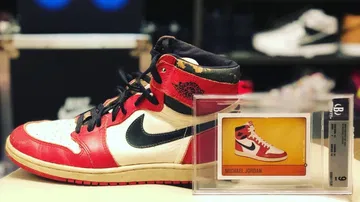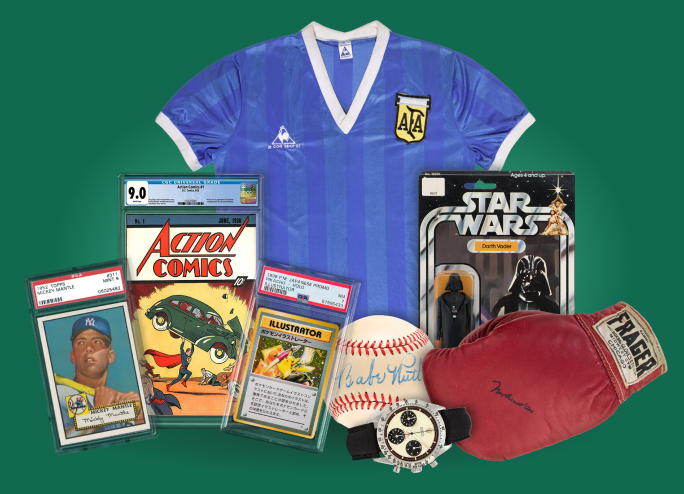
In Collectors MD
collectorsmd
2 d
Edited
Daily Reflection: Same Patterns, Different Products
Published November 09, 2025 | By Alyx E, Founder of Collectors MD
The more conversations we have, the more obvious it becomes—the problem isn’t the product.
Whether it’s trading cards, sneakers, or any other collectible, the same patterns keep surfacing: manufactured scarcity, algorithmic hype, emotional justification, and that quiet feeling of I need this disguised as I love this.
Following our latest episode of The Collector’s Compass with Mikey Dabb (@thecamp0ut), that truth hit even harder. Listening to Mikey describe how sneaker culture has shifted—from community-driven campouts outside brick-and-mortar shops like KITH, CNCPTS, Extra Butter, and Supreme, to resell dashboards and app-based lottery raffles—felt eerily familiar. It’s the same story we’ve watched unfold in the trading card hobby, just with different packaging.
In Episode #18 of The Collector’s Compass, we unpack how sneaker culture mirrors the modern card hobby—two worlds shaped by hype, community, and the psychology of the chase, each struggling to find its way back to intention.
But there’s one key distinction: with trading cards, there’s an element of chance. You don’t know what you’re getting when you open a pack, which makes it inherently more like gambling. That built-in randomness—what we call “the chase”—is deliberately engineered to keep you coming back for the next hit, the next reveal, the next dopamine spike. Not to mention, when we buy wax impulsively, it’s rarely just one—we’re ripping through hundreds or even thousands of dollars’ worth of the same product at a time, chasing that one big hit we’ve convinced ourselves will make it all worth it.
Sneakers, on the other hand, seem more predictable—but they carry their own kind of gamble. The moment buying shifts from passion to prediction—when you’re purchasing pairs in volume to flip, not to wear—you’re still placing a bet. You can’t fortune-tell the aftermarket. Some pairs skyrocket in value, others sit in closets for months, or years ultimately selling for well under retail. It’s not cards in a box, but the psychology is the same: risk, speculation, and the belief that knowledge or timing will somehow protect you from luck.
Sneakers and cards—two different canvases for the same story. Each started as passion and expression, but both now wrestle with speculation, status, and the constant question of what we’re really chasing.
And yet, just like in the card world, community remains the heartbeat of sneaker culture. That’s what made Mikey’s perspective so powerful. Campouts weren’t just about shoes—they were about belonging. You shared stories, made friends, traded memories before a monetary transaction ever entered the equation. But as resale culture scaled and algorithms took over, community became commerce. The lines outside the store turned into a digital queue—and the conversation that used to happen in person now happens in comment sections and digital checkout timers.
Then came the “influencers”—or as sneakerheads call them, “shoetubers”. The same way breakers and content creators drive hype in cards, sneaker YouTubers and Instagram tastemakers dictate what sells out and what sits. The spotlight has become the steering wheel—and too often, it’s pointed wherever engagement goes, not where authenticity lives.
What once was a gathering built on passion and patience has become a marketplace fueled by algorithms—the campout replaced by clicks, but the longing for connection still the same.
Even the structure of the industries mirrors each other. Fanatics has become the Nike of the card world, controlling distribution, access, and marketing narratives. Platforms like eBay, Whatnot, and StockX—where cards and sneakers now share the same marketplace—have blurred the line between collector and retailer, transforming speculation from behavior into business model. And as with every pyramid built on hype, the true collector—the one who still buys for love, memory, or design—ends up at the bottom, quietly holding onto what everyone else overlooked.
Mikey said something during our conversation that stuck with me: it’s not about keeping up—it’s about staying grounded. Because when you slow down, when you buy what actually resonates instead of what’s trending, you reclaim the part of collecting that no platform can quantify—meaning.
So whether it’s a pair of sneakers or a pack of cards, the challenge remains the same: to collect with clarity, intention, and accountability—not compulsion. To remember that ownership isn’t what gives something value—it’s connection.
#CollectorsMD
Different products, same psychology—and the same opportunity to slow down and rewrite the story.
—
Follow us on Instagram: @collectorsmd
Subscribe to our Newsletter & Support Group
Join The Conversation On Mantel
Read More Daily Reflections



